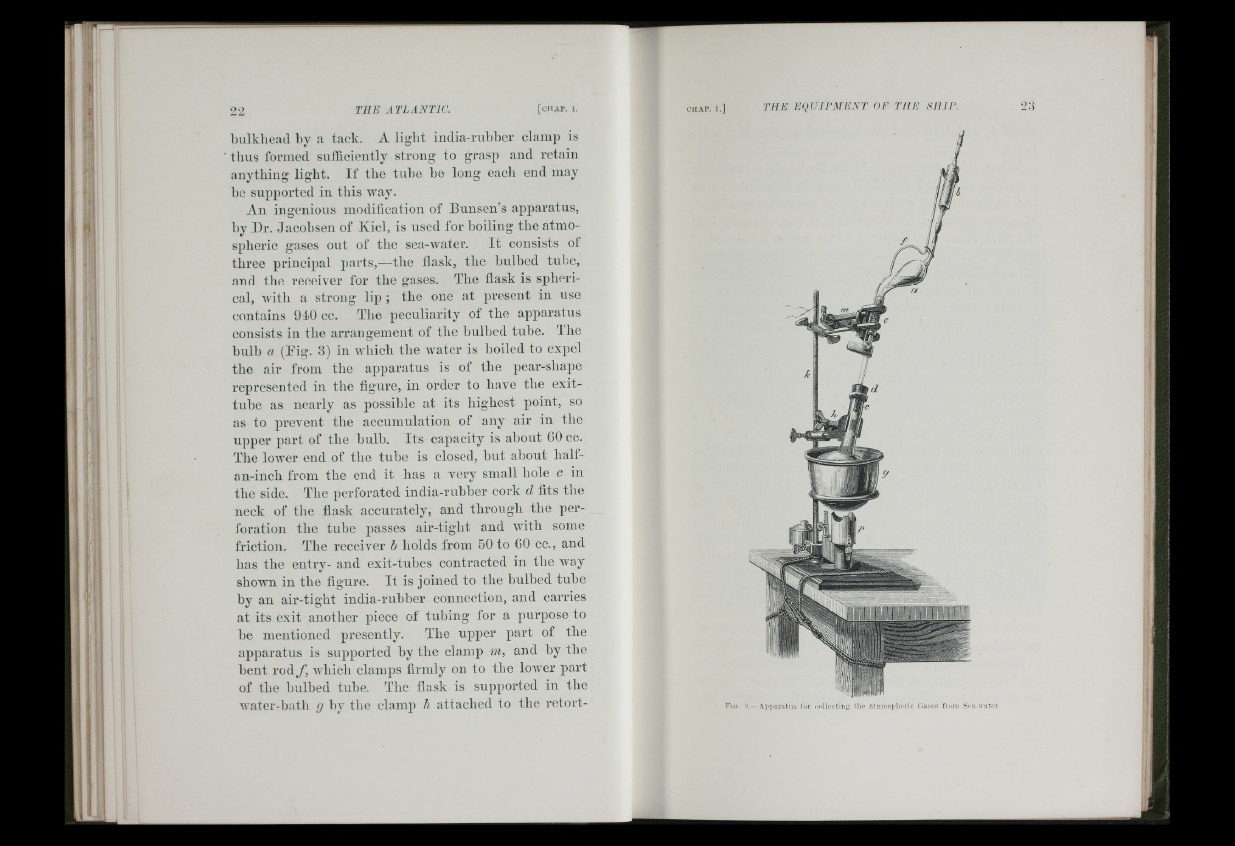
9 J
[ [ 7
lii
I J
bulkhead hy a tack. A light india-rubber clamp is
thus formed sulficiently strong to grasp and retain
anything light. I f the tube he long each end may
he supported in this way.
An ingenious modification of Bunsen’s apparatus,
hy Dr. Jacobsen of Kiel, is used for boiling the atmospheric
gases out of the sea-water. It consists ot
three principal parts,—the flask, the bulbed tube,
and the receiver for the gases. The flask is spherical,
with a strong lip ; the one at present in use
contains 910 cc. The peculiarity of the apparatus
consists in the arrangement of the bulbed tube. The
hulh a (Dig. 3) in Avliicli the Avater is boiled to expel
the air from the apparatus is of the pear-sliape
represented in the figure, in order to liave the exit-
tuhe as nearly as possible at its highest point, so
as to prevent the accumulation of any air in the
upper part of the hulh. Its capacity is about 60 cc.
The loAver end of the tube is closed, hut about lialf-
an-incli from the end it lias a very small hole c in
the side. The perforated india-ruhher cork d fits the
neck of the flask accurately, and through the per-
ibration the tube passes air-tight and Avith some
friction. The receiA’er h holds from 50 to 60 cc., and
has the entry- and exit-tuhes contracted in the Avay
shown in the figure. It is joined to the bulbed tube
by an air-tight india-ruhher connection, and carries
at its exit another piece of tubing for a purpose to
he mentioned presently. The upper part of the
apparatus is supported hy the clamp m, and hy the
bent rod/ , Avliich clamps firmly on to the loAver part
of the bulbed tube. The flask is supported in the
water-hath g hy the clamp li attached to the retort- 3, - Ap]>aratui> fur md le c t i i ig Uif' n l i i io s jd ic r ic f rom f ten -wa te r
n